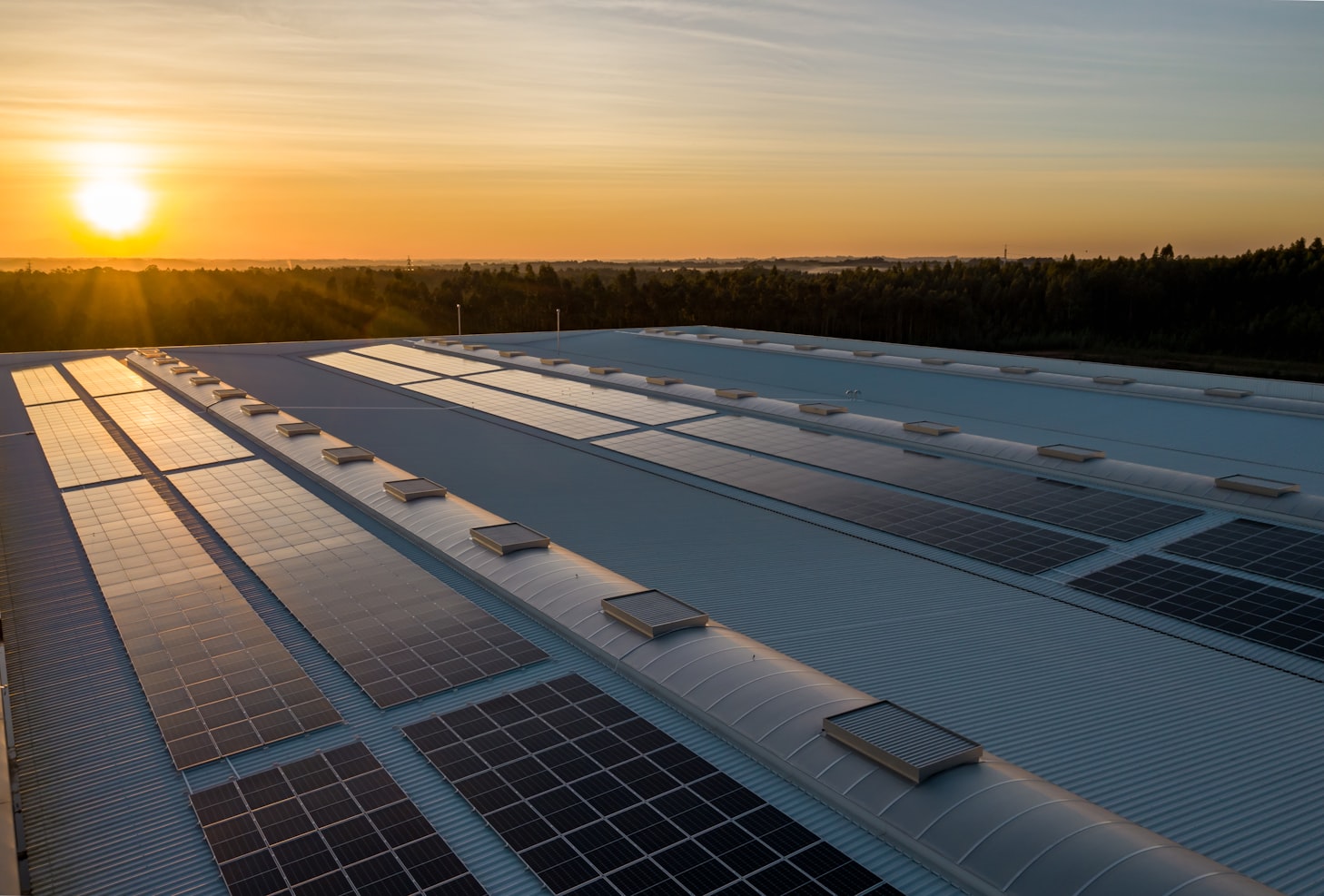Living off-grid is an exciting adventure that allows you to connect with nature and experience unparalleled freedom. For many cabin owners, transitioning to solar power is a crucial step in this journey.
The “off grid solar kits for cabin” is more than just a way to achieve energy independence; it’s a way to adopt a sustainable lifestyle in harmony with the environment.
Understanding off grid solar systems
An off-grid solar system is a self-sufficient power solution that works independently of the national electricity grid. This means homeowners, particularly those in remote areas, can generate, store, and manage their electricity.
In contrast to on-grid systems connected to the public electricity network and can sell surplus power back to the grid, off-grid systems only rely on the power they generate. This fundamental difference highlights independence and self-reliance, making off-grid systems ideal for areas where grid connection is impractical or too expensive.

What do off-grid solar cabin kits include?
Off grid solar cabin kits include several components to provide electricity to cabins without relying on the power grid. The following are the essential components of off grid solar kits for cabins:
Photovoltaic (PV) panels: These panels capture sunlight and convert it into electricity. The size and number of panels needed depend on the cabin’s energy requirements and the amount of available sunlight.
Battery bank: Since solar power is not constant and is affected by nighttime and cloudy days, the battery bank stores excess energy produced during sunny periods. This stored energy is then used when the PV panels cannot generate power, ensuring a continuous energy supply.
Charge controller: This component protects the battery bank from being overcharged by the solar panels or over-discharged by the home’s power needs. It regulates the flow of electricity to and from the battery bank, prolonging its lifespan and ensuring efficient system operation.
Inverter: Solar panels and batteries deal with direct current (DC), but most home appliances require alternating current (AC). The inverter converts DC from the panels and batteries into AC, making the electricity usable for the home.
Necessary accessories: These include mounting hardware for the solar panels, wiring, fuses, and disconnects to integrate all components safely. Proper installation and maintenance are crucial for the system’s performance and safety.
Selecting the right off grid solar kit for your cabin
Choosing the perfect off grid solar kit requires understanding your cabin’s energy needs. It’s about finding a balance between your lifestyle, solar technology’s capabilities, and the environment around your cabin.
Cabin size and layout: The overall square footage of your cabin is a starting point, but think beyond just size. The layout, including the number and usage of rooms, affects energy consumption. For example, a cabin with separate living and sleeping areas may require more heating and lighting energy than a single-room layout.
Location’s climate and geography: Your cabin’s location affects how much energy you’ll need for heating and cooling. For example, a cabin in a colder climate may require more energy for heating, whereas a warmer one may need air conditioning. The orientation of your cabin to the sun, shading from trees, and elevation can also impact the solar panels’ effectiveness.
Sunlight exposure: The amount of sunlight your solar panels receive depends on your cabin’s location. Cabins in colder climates or with dense tree cover may receive less direct sunlight. This means you may need a larger array of solar panels. Additionally, you should consider seasonal changes in sunlight exposure and how local weather patterns, such as frequent fog or rain, could impact solar energy collection.
Appliance usage and efficiency: Detail the energy consumption of each appliance, focusing on those that are essential for your daily life. You should identify which appliances are essential for your daily needs, such as refrigerators, water pumps, or heating systems, as these tend to consume more power and operate continuously.
Other appliances, like blenders, vacuum cleaners, or power tools, might have high individual power requirements, but their occasional use affects overall energy calculations differently.
It’s also important to pay attention to the energy efficiency of your appliances. Choosing energy-efficient models can significantly reduce your overall power consumption, and impact the size of the solar system you’ll need.
Energy consumption patterns: Understanding when you use most of your energy (daytime vs. nighttime, seasonal variations) can influence the size of your battery bank and the configuration of your off grid solar kits. If your peak energy usage occurs in the evening, you’ll need a robust battery system to store enough solar power during the day.

Top off grid solar kits for cabins
When it comes to living off the grid, it’s important to choose the right off grid solar kit for your tiny home, cabin, or RV. This will help you achieve energy independence and sustainability. Several reputable brands are available on the market, and it’s crucial to compare their offerings based on scalability, remote monitoring capabilities, specifications, and pricing.
Renogy solar kits
Renogy is a popular brand that offers high-quality solar panels and comprehensive kits, a preferred choice for off-grid enthusiasts.
Pros: Renogy kits are highly durable, efficient, and easy to install. They offer scalability, which means you can start with a small kit and add more panels as your energy needs grow. The newer models come with Bluetooth connectivity, enabling remote monitoring and management of your system.
Cons: The initial cost of Renogy kits can be slightly higher than that of other brands, and some users have faced challenges with customer service.
Specifications and pricing: The Renogy 400W Monocrystalline Solar RV Kit is a popular option that costs around $750-$800. It is ideal for RVs but is equally suitable for cabins. The kit includes four 100W solar panels, a charge controller, wiring, and mounting hardware.
Suitability: Renogy kits are ideal for small to medium-sized cabins and RVs. They offer the flexibility to add more panels for larger energy requirements.
WindyNation solar kits
WindyNation provides affordable solar power solutions that are perfect for budget-conscious buyers who want to explore the benefits of solar energy.
Pros: These kits offer excellent value for money, with complete packages including everything required to generate solar energy. They are also user-friendly, making them ideal for DIY enthusiasts.
Cons: WindyNation’s panels may not be as efficient as those of higher-end brands. Moreover, scalability and upgrade options are somewhat limited.
Specifications and pricing: The WindyNation 400W Solar Kit is a popular choice that comes with four 100W panels, a PWM charge controller, and a battery bank. The price ranges around $600-$650.
Suitability: This kit is best suited for smaller cabins or RVs with modest energy requirements. It is an excellent entry-level option.
Eco-worthy solar kits
Eco-Worthy provides affordable and efficient solar solutions that are ideal for off-grid living.
Pros: These kits are among the most reasonably priced in the market, which can translate to significant cost savings. In addition, they are easy to install and come with practical accessories to help you get started.
Cons: It’s worth noting that the durability and efficiency of Eco-Worthy panels may not be as high as more premium brands. Also, the scope for system expansion and remote monitoring features may be limited.
Specifications and pricing: One example of their product is the Eco-Worthy 200W Monocrystalline Solar Kit, which is perfect for very small cabins or RVs. This kit includes two 100W panels, a charge controller, and necessary cables, and prices range from $300 to $350.
Suitability: Eco-Worthy solar solutions are ideal for individuals with minimal energy needs or those who are just starting with solar power.

Off grid solar kits installation process
Harnessing solar power requires strategic planning. The first step is to choose an optimal location for the photovoltaic (PV) panels that maximizes sunlight exposure throughout the year.
The next step is properly mounting the panels, which may involve securing them to the roof or a stable ground mount, depending on your setup and space.
After that, the panels are wired to a charge controller, ensuring the batteries are charged safely. The controller then connects to the battery bank, where power is stored. Finally, an inverter is installed to convert the electricity from DC to AC for household needs.
Due to the complexity of this setup, especially the electrical components, we highly recommend consulting with a professional or opting for expert installation to ensure safety and efficiency.
Maintenance: Low upkeep with periodic checks
Off-grid solar systems are known for their low maintenance requirements. However, periodic attention is necessary to maintain optimal performance.
Routine tasks include cleaning the solar panels to ensure they absorb sunlight without obstruction and inspecting connections for tightness and absence of corrosion.
The battery bank requires special attention. Regular monitoring is needed to check charge levels and refill lead-acid batteries with distilled water as necessary.
Adhering to these maintenance practices ensures the longevity and reliability of your off-grid solar system, safeguarding your sustainable energy investment.

Conclusion
Embracing off grid solar kits for your cabin is a great way to ensure energy independence and contribute to a more sustainable world. To achieve this, you must carefully select a solar kit that matches your energy requirements and understand the installation process. By doing so, you can enjoy the benefits of clean, renewable energy in your off-grid cabin.
Let’s harness the sun’s power to create a brighter, greener tomorrow.











